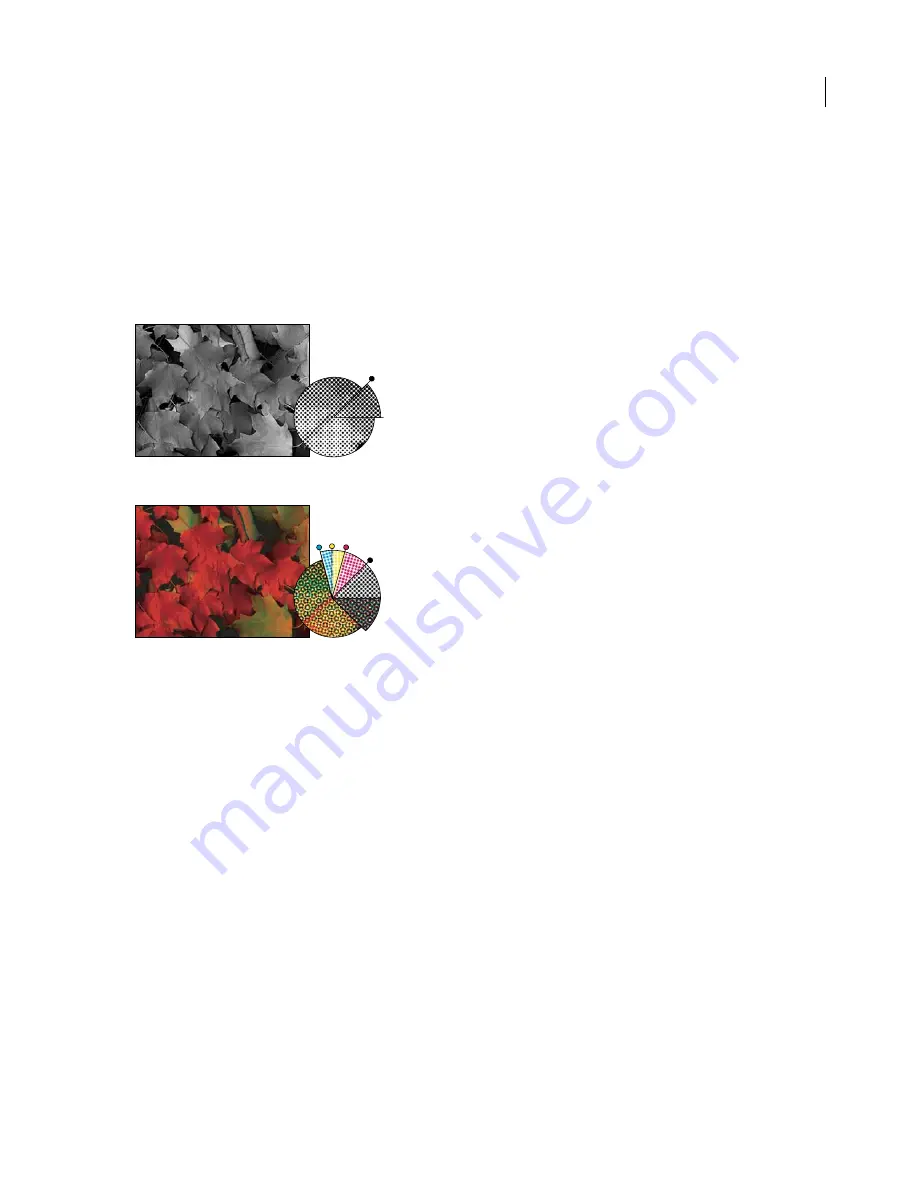
721
ADOBE PHOTOSHOP CS2
User Guide
Selecting halftone screen attributes
Halftone screen attributes include the screen frequency and dot shape for each screen used in the printing process.
For color separations, the prepress person must also specify an angle for each of the color screens. Set the screens at
different angles to ensure that the dots placed by the four screens blend into continuous color and do not produce
moiré patterns.
Halftone screens consist of dots that control how much ink is deposited at a specific location on-press. Varying their
size and density creates the illusion of variations of gray or continuous color. For a process color image, four halftone
screens are used: cyan, magenta, yellow, and black—one for each ink used in the printing process.
45
0
Halftone screen with black ink
105 90 75
45
0
Halftone screens with process ink at different screen angles; correctly registered dots form rosettes.
In traditional print production, a halftone is produced by placing a halftone screen between a piece of film and the
image and then exposing the film. In Photoshop, you specify the halftone screen attributes just before producing the
film or paper output. For best results, your output device (a PostScript imagesetter, for example) should be set to the
correct density limit, and your processor should be properly calibrated; otherwise, results can be unpredictable.
Before creating your halftone screens, check with your print shop for preferred frequency, angle, and dot settings.
(Use the default angle settings unless your print shop specifies changes.)
To define the attributes of a halftone screen
1
Choose File > Print With Preview.
2
Select More Options (it is already selected if Fewer Options is displayed), choose Output from the pop-up menu,
and click Screen.
3
In the Halftone Screens dialog box, choose whether to generate your own screen settings:
•
Deselect Use Printer’s Default Screens to choose your own screen settings.
•
Select Use Printer’s Default Screens to use the default halftone screen built into the printer. Photoshop then ignores
the specifications in the Halftone Screens dialog box when it generates the halftone screens.
4
For a grayscale halftone, enter a screen frequency from 1 to 999.999, and choose a unit of measurement. Enter a
screen angle from –180 to +180 degrees.
















































